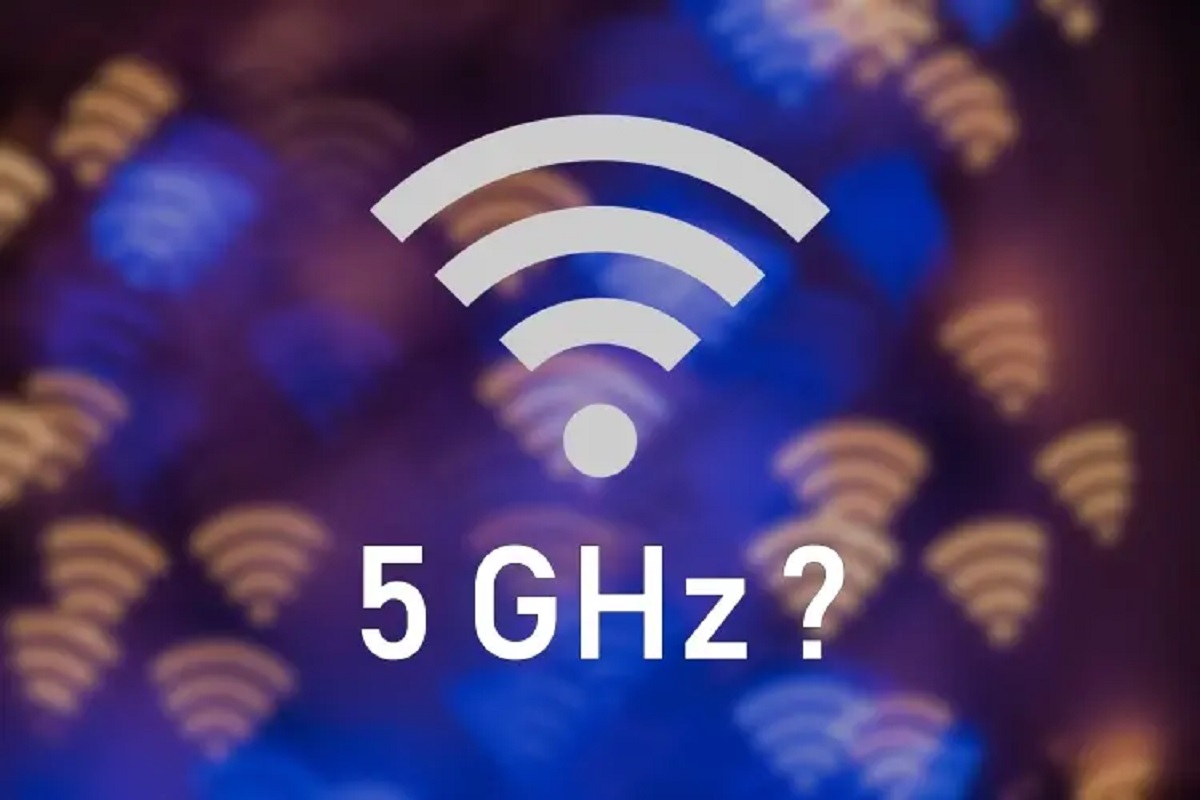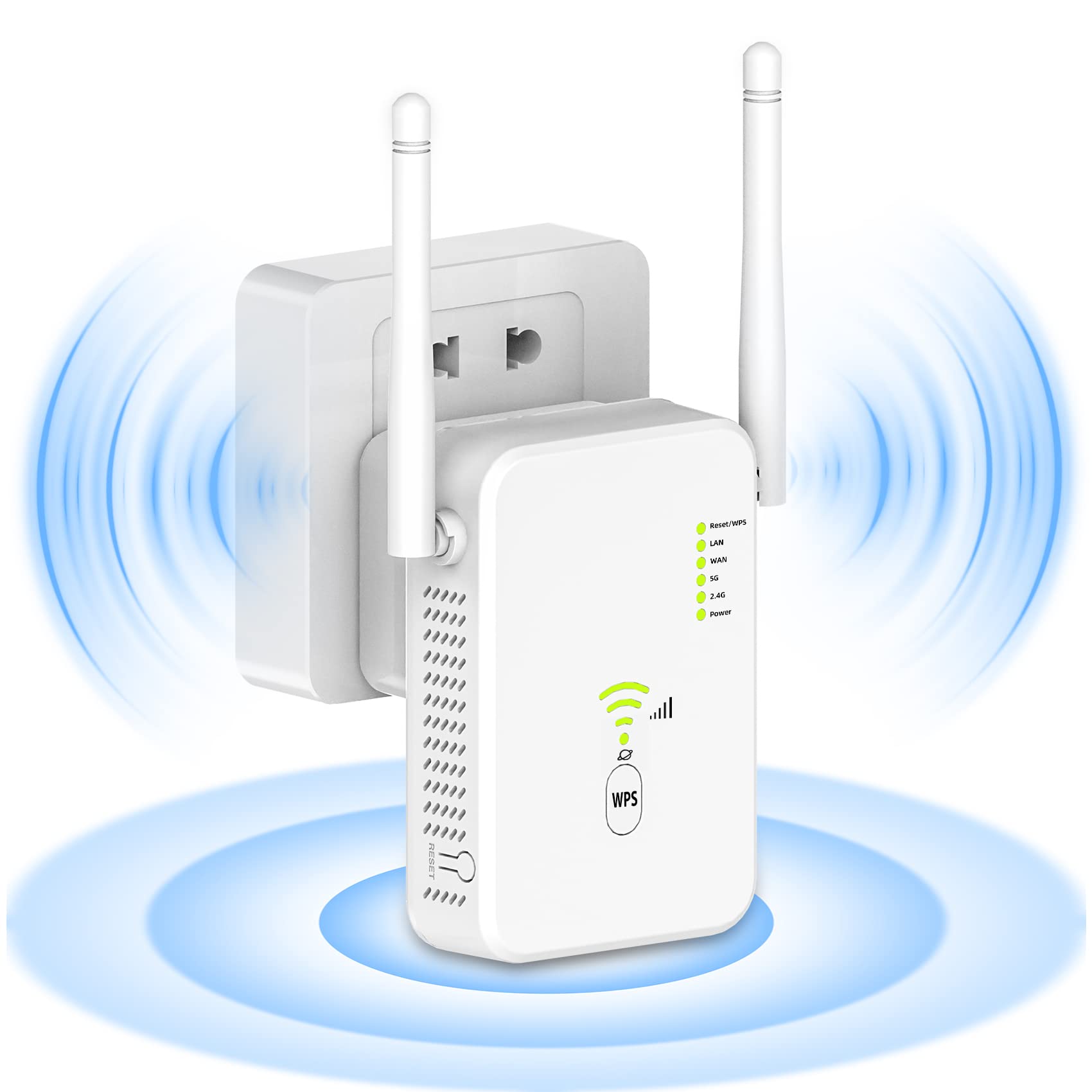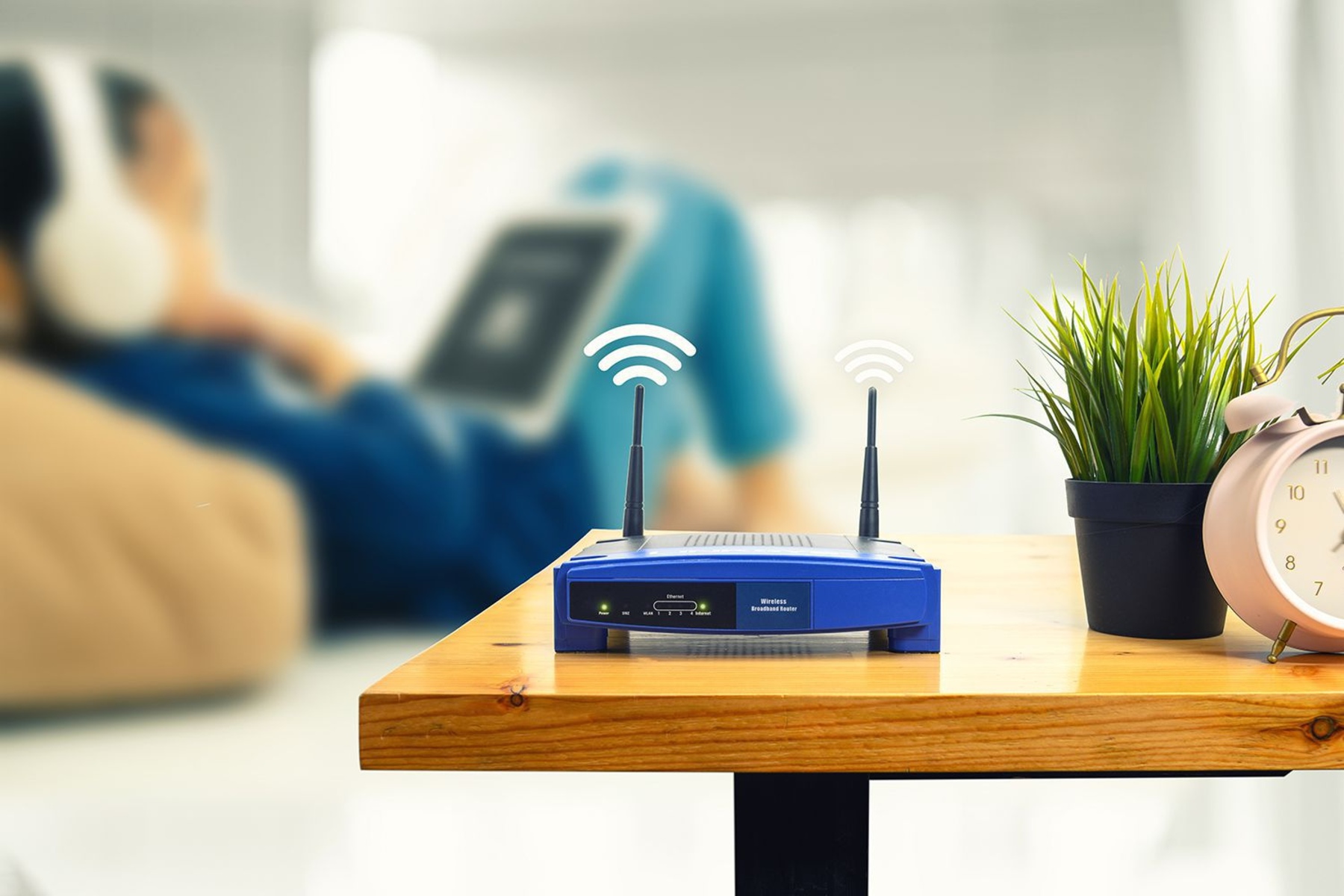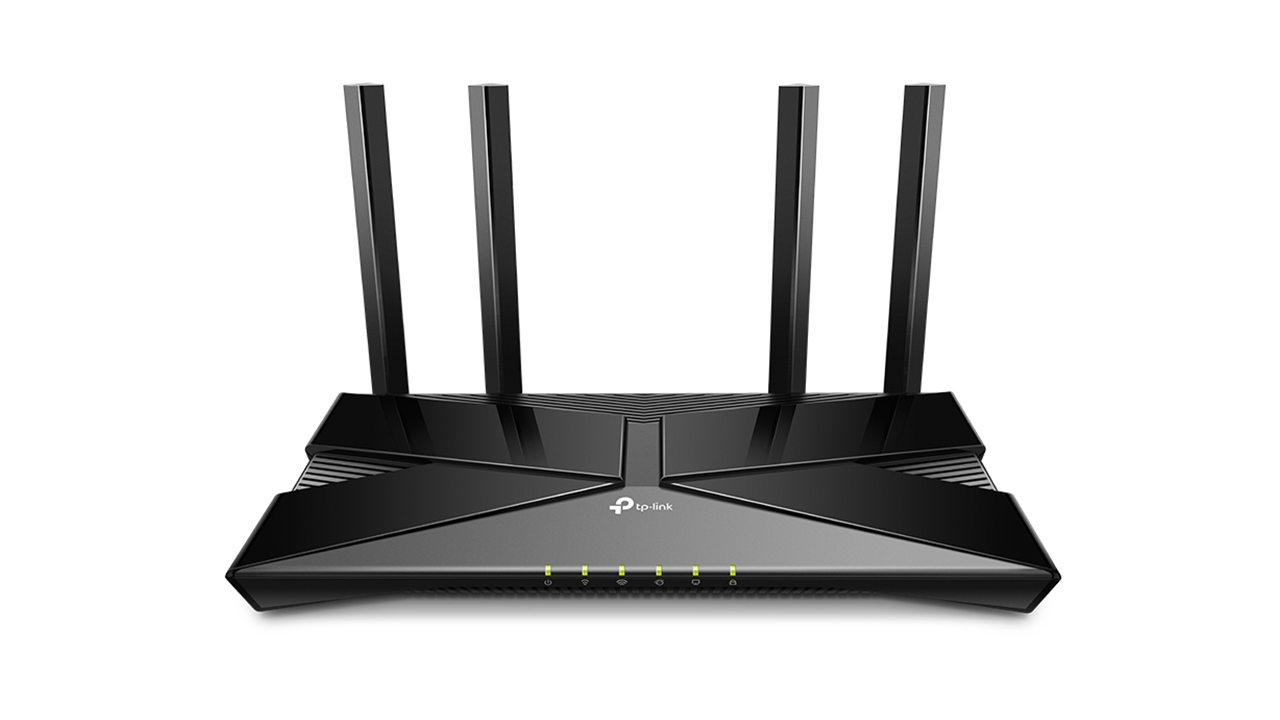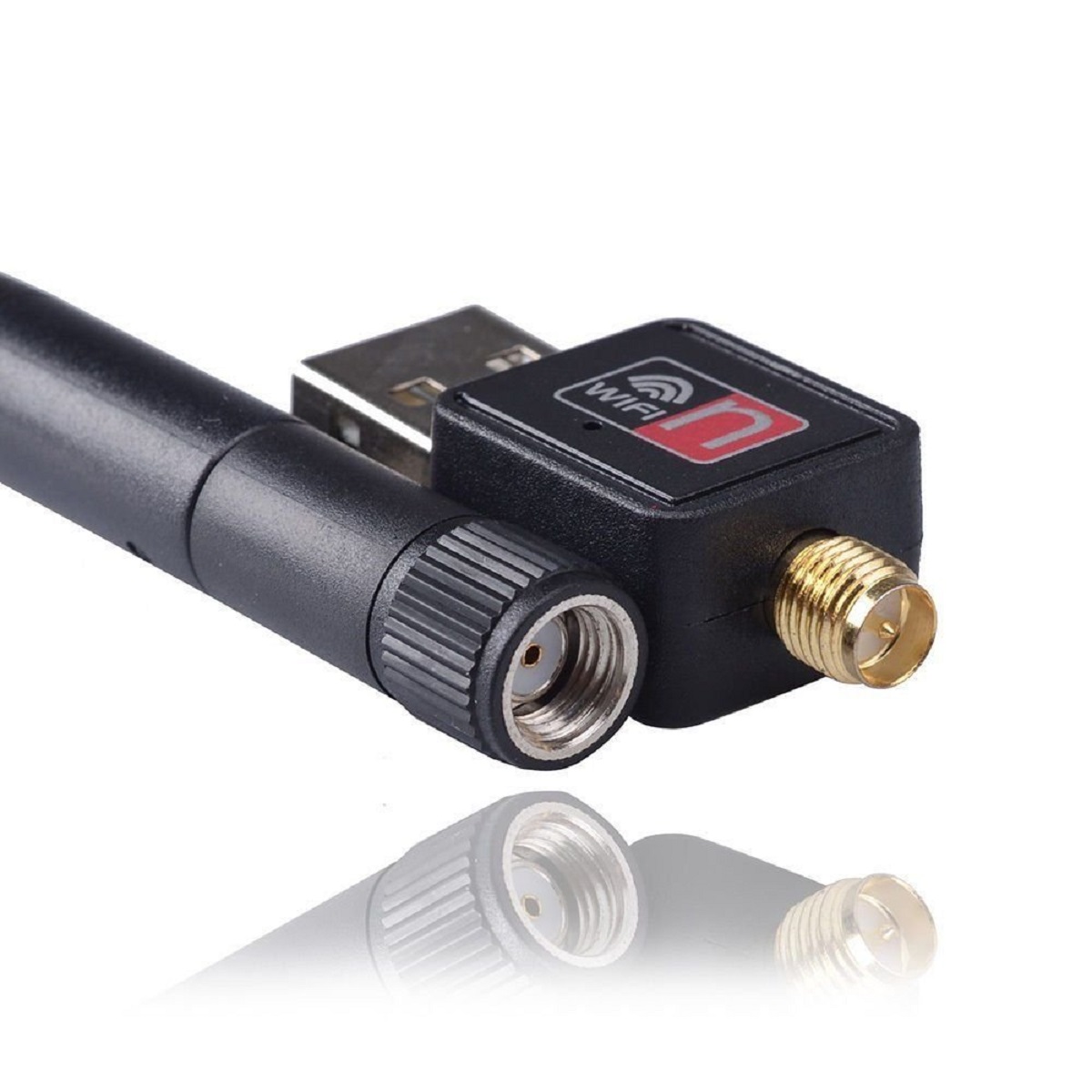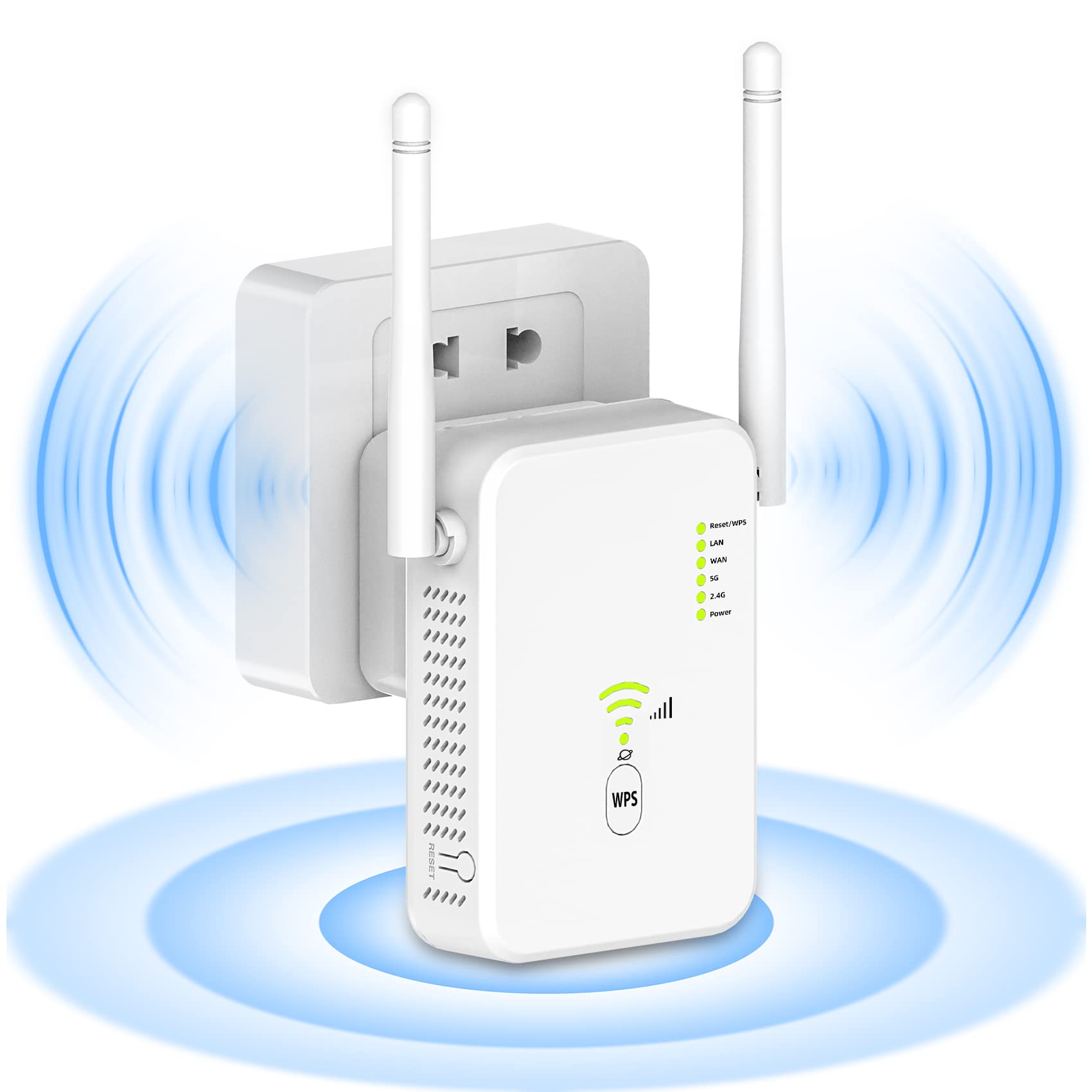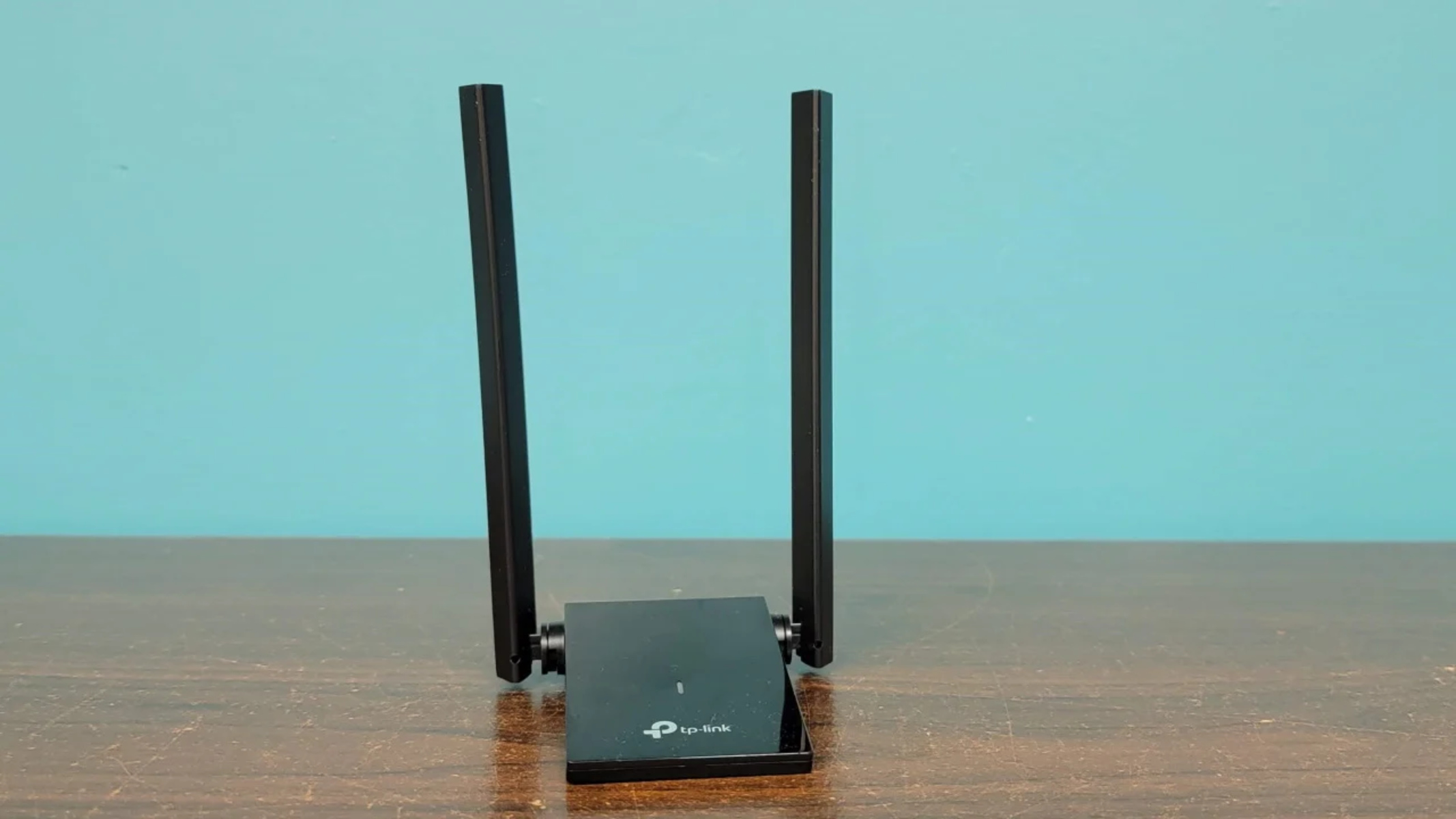Introduction
Wi-Fi has become an integral part of our daily lives, enabling us to connect our devices to the internet without the need for physical cables. While most of us are familiar with the 2.4GHz Wi-Fi frequency, there is another option available that offers faster speeds and less interference – 5GHz Wi-Fi.
5GHz Wi-Fi, also known as 5G Wi-Fi, operates on a higher frequency band than the commonly used 2.4GHz Wi-Fi. This higher frequency allows for faster data transfer rates, providing a more seamless and reliable internet experience.
In this article, we will explore what 5GHz Wi-Fi is, how it differs from 2.4GHz Wi-Fi, and the benefits and considerations of using it. We will also discuss device compatibility, factors that affect the signal strength of 5GHz Wi-Fi, and how to activate and utilize it on your devices.
If you are looking for a way to enhance your internet speed and performance, understanding 5GHz Wi-Fi and how to leverage its capabilities can significantly improve your online experience. Whether you are a gamer, a remote worker, or an avid streamer, 5GHz Wi-Fi has the potential to elevate your connectivity to new levels.
What is 5GHz Wi-Fi?
5GHz Wi-Fi refers to the wireless networking technology that operates on the 5GHz frequency band. It is an alternative to the widely used 2.4GHz Wi-Fi frequency and offers several advantages over its counterpart. The 5GHz frequency provides faster data transfer rates and is less prone to interference from other devices, making it ideal for high-bandwidth activities and crowded network environments.
Unlike the 2.4GHz band, which is divided into only three non-overlapping channels, the 5GHz band offers a much wider range of channels, resulting in less congestion and higher network capacity. This means that more devices can connect simultaneously without experiencing significant performance degradation.
One of the notable features of 5GHz Wi-Fi is its support for higher data rates. It can provide faster download and upload speeds compared to 2.4GHz, which is beneficial for activities that require a lot of bandwidth, such as streaming 4K videos, online gaming, and large file transfers.
Furthermore, 5GHz Wi-Fi operates using wider channel bandwidths, which allows for greater throughput. This means that more data can be transmitted at once, resulting in faster overall speeds and improved network efficiency.
It is important to note that 5GHz Wi-Fi has a shorter range compared to 2.4GHz Wi-Fi. The higher frequency signals used by 5GHz have more difficulty penetrating through walls and other obstacles. Therefore, while the speed and performance of 5GHz Wi-Fi are superior, it may be necessary to position your Wi-Fi router or access points strategically to ensure maximum coverage throughout your home or office.
How does 5GHz Wi-Fi differ from 2.4GHz Wi-Fi?
When it comes to Wi-Fi, the most significant difference between 5GHz and 2.4GHz is the frequency band they operate on. While 2.4GHz has been the traditional choice for Wi-Fi networks, 5GHz offers some advantages that make it a compelling alternative.
One of the main differences is the availability of channels. The 2.4GHz band has only three non-overlapping channels, which can quickly become congested in densely populated areas. On the other hand, the 5GHz band provides a much larger number of non-overlapping channels, offering more flexibility and reducing interference from neighboring networks.
Another distinction is the speed and bandwidth. 5GHz Wi-Fi is capable of delivering faster data transfer rates compared to 2.4GHz Wi-Fi. This is especially noticeable in scenarios where high-bandwidth applications are used, such as HD video streaming or online gaming. The wider channel bandwidths available in the 5GHz band contribute to this increased speed and capacity.
However, it is important to note that 5GHz Wi-Fi has a shorter range compared to 2.4GHz Wi-Fi due to the physical properties of higher frequency signals. The shorter range means that the coverage area of a 5GHz Wi-Fi network may be reduced, especially when obstacles like walls are present. This limitation can be overcome by strategically placing multiple access points or using Wi-Fi extenders to ensure coverage throughout your space.
Interference is another aspect where 5GHz Wi-Fi differs from its 2.4GHz counterpart. The 2.4GHz band is crowded with various devices like microwaves, cordless phones, and Bluetooth devices that can cause interference and impact Wi-Fi performance. In contrast, the 5GHz band is less congested, offering a cleaner signal with reduced interference.
In summary, 5GHz Wi-Fi provides more channels, faster speeds, and less interference compared to 2.4GHz Wi-Fi. However, the trade-off is a shorter range, which can be mitigated by careful placement of access points and proper network planning. Whether you should choose 5GHz or 2.4GHz Wi-Fi depends on your specific needs and the environment in which you will be using your network.
Benefits of 5GHz Wi-Fi
5GHz Wi-Fi offers several key benefits that make it a preferred choice for many users seeking faster and more reliable wireless connectivity.
One of the main advantages of 5GHz Wi-Fi is its superior speed. With wider channel bandwidths and less interference, 5GHz Wi-Fi can deliver significantly faster data transfer rates compared to 2.4GHz. This makes it ideal for bandwidth-intensive activities such as streaming high-definition videos, online gaming, and large file downloads or uploads. The increased speed ensures a smoother and more responsive online experience.
Another benefit of 5GHz Wi-Fi is its reduced interference. The 2.4GHz band is heavily utilized by various devices such as microwaves, cordless phones, and Bluetooth devices, which can cause signal interference and impact Wi-Fi performance. In contrast, 5GHz Wi-Fi operates on a less congested frequency band, resulting in a cleaner and more stable connection with minimal interference from other devices.
Furthermore, the higher frequency used by 5GHz Wi-Fi allows for more channels and a wider range of available frequencies. This means that there is less chance of overlapping with neighboring Wi-Fi networks, reducing the likelihood of signal interference and improving overall network performance.
Another advantage is the improved network capacity of 5GHz Wi-Fi. The wider range of available channels allows for more devices to connect simultaneously without experiencing significant performance degradation. This is particularly beneficial in environments with multiple devices, such as households or offices, where numerous Wi-Fi-enabled devices are connected at the same time.
Additionally, 5GHz Wi-Fi offers enhanced security features. Many modern routers and devices support advanced encryption protocols like WPA3, providing stronger protection against unauthorized access and ensuring the privacy of your data while using the network.
In summary, the benefits of 5GHz Wi-Fi include faster speeds, reduced interference, improved network capacity, and enhanced security. These advantages make it an excellent choice for users who require high-performance wireless connectivity for demanding applications and environments where multiple devices need to connect simultaneously. Understanding the benefits of 5GHz Wi-Fi can help you make informed decisions when setting up or upgrading your Wi-Fi network.
Considerations for using 5GHz Wi-Fi
While 5GHz Wi-Fi offers numerous advantages, it’s important to consider certain factors before implementing it in your network setup.
One consideration is the range of 5GHz Wi-Fi. Due to the higher frequency, the signal of 5GHz Wi-Fi has a shorter range compared to 2.4GHz Wi-Fi. This means that the coverage area of a 5GHz network may be reduced, especially in larger homes or offices with thick walls or multiple floors. If you require extensive coverage, it’s essential to strategically place Wi-Fi routers or use range extenders to ensure all areas have a reliable connection.
Compatibility with devices is another factor to consider. While most modern devices support 5GHz Wi-Fi, older or budget devices may only be compatible with 2.4GHz. Before solely relying on 5GHz Wi-Fi, ensure that all the devices you plan to connect are capable of utilizing this frequency band. Additionally, certain IoT devices, such as smart home devices or security systems, may only support 2.4GHz, so it’s important to verify compatibility beforehand.
Interference from other electronic devices can impact the performance of 5GHz Wi-Fi. While 5GHz is less prone to interference compared to 2.4GHz, it is still susceptible to obstacles like walls, metal objects, or other wireless devices operating on nearby frequencies. To optimize your 5GHz network, keep the router away from potential sources of interference and other electronic devices that may disrupt the signal.
Another consideration is the availability of channels. While 5GHz offers more non-overlapping channels compared to 2.4GHz, interference can still occur if neighboring networks are using the same channels. It’s important to analyze the Wi-Fi spectrum in your area and select channels with the least interference to ensure optimal performance.
Lastly, it’s important to note that not all Wi-Fi devices will automatically choose the 5GHz band if both 2.4GHz and 5GHz are available. Some devices may prefer the 2.4GHz band due to its longer range, potentially leading to slower speeds. To ensure that your devices are utilizing the full capabilities of 5GHz Wi-Fi, you may need to manually prioritize the 5GHz band in your device settings.
In summary, considerations for using 5GHz Wi-Fi include range limitations, compatibility with devices, potential interference, channel availability, and device preference. By addressing these factors, you can optimize your 5GHz Wi-Fi network to deliver faster speeds and a more reliable connection.
Compatibility with Devices
When considering the use of 5GHz Wi-Fi, it’s essential to evaluate the compatibility of your devices with this frequency band. While most modern devices support 5GHz Wi-Fi, there are some key factors to keep in mind.
Firstly, check the specifications of your devices to confirm if they have 5GHz Wi-Fi capabilities. Devices such as smartphones, tablets, laptops, and smart TVs released within the past few years are likely to support 5GHz. However, older devices or budget models may only be compatible with 2.4GHz Wi-Fi. It’s important to verify the supported frequency bands before relying solely on 5GHz Wi-Fi.
In some cases, devices may have dual-band capabilities, meaning they can operate on both 2.4GHz and 5GHz frequencies. However, they may default to the 2.4GHz band due to its longer range. To ensure your devices take advantage of the faster speeds and reduced interference of 5GHz, check the device settings and manually prioritize the 5GHz band if necessary.
It’s also worth noting that certain Internet of Things (IoT) devices, such as smart home devices, security cameras, or baby monitors, may only support 2.4GHz Wi-Fi. These devices often rely on older Wi-Fi chipsets or have limited compatibility options. If you plan to integrate IoT devices into your network, ensure that they are compatible with the 5GHz band or consider creating separate networks for different frequency bands.
When setting up your Wi-Fi network, it’s advisable to choose a router that supports both 2.4GHz and 5GHz frequencies. This will allow you to cater to devices that are compatible with either band. Dual-band routers offer the flexibility to connect devices to the frequency that best suits their capabilities and optimize the overall network performance.
In summary, compatibility with devices is an important consideration when implementing 5GHz Wi-Fi. Ensure that your devices support the 5GHz frequency band to take advantage of faster speeds and reduced interference. Additionally, be mindful of IoT devices that may only support 2.4GHz and plan your network setup accordingly. By considering device compatibility, you can optimize your network and ensure seamless connectivity across all your devices.
Factors Affecting 5GHz Wi-Fi Signal Strength
The performance and signal strength of 5GHz Wi-Fi can be influenced by various factors. Understanding these factors can help optimize your network setup and ensure a reliable and strong signal throughout your space.
1. Distance: The distance between your device and the Wi-Fi router/access point plays a significant role in signal strength. As 5GHz signals have a shorter range compared to 2.4GHz, the signal may weaken over longer distances. To maintain a strong signal, ensure that your devices are within a reasonable range of the router and consider using range extenders or additional access points for larger spaces.
2. Obstacles: Physical objects like walls, floors, and furniture can weaken the 5GHz Wi-Fi signal. These obstructions can cause signal degradation, especially if they are made of materials that are known to interfere with radio frequencies. Position your router and devices in a way that minimizes the number of obstacles between them to improve signal strength.
3. Interference: Other electronic devices operating on similar frequencies can cause interference and impact signal strength. Examples include cordless phones, microwave ovens, and even neighboring Wi-Fi networks. To reduce interference, choose non-overlapping channels and position the Wi-Fi router away from potential sources of interference.
4. Wi-Fi Router Placement: The location of your Wi-Fi router or access point can significantly impact signal strength. Placing the router in a centralized location within your home or office can help distribute the signal more evenly. Avoid placing the router in enclosed spaces or near large metal objects that can block or reflect the signal.
5. Router Antennas: The configuration and positioning of the router’s antennas can affect signal strength. Ensure that the antennas are properly attached and oriented to optimize signal coverage. Experiment with different orientations, such as pointing the antennas vertically or horizontally, to find the best signal reception.
6. Wi-Fi Interference Apps & Devices: Some apps or devices may cause interference with your Wi-Fi signal. It’s recommended to monitor the Wi-Fi environment using apps or tools specifically designed to detect interference and identify potential conflicts or rogue devices that may hinder signal quality.
By taking these factors into consideration and implementing best practices for Wi-Fi signal optimization, you can maximize the signal strength and performance of your 5GHz Wi-Fi network. This will result in a more reliable and seamless wireless experience across your devices.
How to Activate and Use 5GHz Wi-Fi on Your Devices
Activating and utilizing 5GHz Wi-Fi on your devices is a straightforward process. However, the steps may vary slightly depending on the operating system of your device. Here are general instructions to enable and connect to 5GHz Wi-Fi:
1. Check Device Compatibility: Before proceeding, ensure that your device supports 5GHz Wi-Fi. Most modern smartphones, tablets, laptops, and smart TVs are compatible, but it’s always a good idea to check the device specifications or consult the user manual.
2. Access Router Settings: Open a web browser on a device connected to your Wi-Fi network and enter the router’s IP address in the address bar. Enter the login credentials (usually found on the router or provided by your internet service provider) to access the router’s settings page.
3. Enable 5GHz Wi-Fi: Once logged in to the router’s settings page, navigate to the wireless network settings. Look for an option to enable the 5GHz frequency band or dual-band mode. Save the changes and wait for the router to apply the settings.
4. Connect to 5GHz Network: On your device, go to the Wi-Fi settings. Look for your network’s name, which may include “5G” or “5GHz” in the SSID. Select the network and enter the Wi-Fi password if prompted. Wait a few moments for your device to connect to the network.
5. Verify Connection: Once connected, verify that your device is now utilizing the 5GHz Wi-Fi. On some devices, a network icon or indicator may show the frequency band being used. You can also use a Wi-Fi analyzer app to check the network frequency and signal strength.
6. Further Optimization: To ensure optimal performance, you can experiment with the positioning of your device or Wi-Fi router. Consider the distance between your device and the router, as well as potential obstacles that may interfere with the signal.
Remember that the steps to enable and connect to 5GHz Wi-Fi may differ slightly depending on the device and router model. If you encounter any issues, consulting the user manual or contacting the manufacturer’s support can provide you with more specific instructions.
By activating and using 5GHz Wi-Fi on your devices, you can take advantage of faster speeds, reduced interference, and improved network capacity. Enjoy a seamless and reliable wireless experience for your bandwidth-intensive activities.
Conclusion
5GHz Wi-Fi offers numerous advantages over traditional 2.4GHz Wi-Fi, providing faster speeds, reduced interference, and improved network capacity. By understanding the differences between the two frequency bands and considering factors such as range, compatibility, interference, and device prioritization, you can optimize your Wi-Fi network for optimal performance.
With 5GHz Wi-Fi, you can experience faster data transfer rates, making it ideal for bandwidth-intensive activities such as streaming high-definition videos, online gaming, and large file transfers. Its reduced interference from other devices and wider range of available channels contribute to a more stable and reliable connection.
However, it’s important to consider the limitations of 5GHz Wi-Fi, such as its shorter range and potential compatibility issues with older or budget devices. Strategic router placement, selecting the right channel, and optimizing device settings can help mitigate these challenges.
By activating and using 5GHz Wi-Fi on your devices, you can unlock the full potential of your network and enjoy a seamless online experience. Whether you’re working from home, streaming your favorite shows, or engaging in online gaming, 5GHz Wi-Fi can significantly enhance your connectivity and improve your overall internet experience.
Continued advancements in technology and the growing demand for faster and more reliable internet connectivity make 5GHz Wi-Fi an attractive option. By embracing this technology and implementing the necessary steps to optimize its performance, you can stay ahead of the curve and enjoy the benefits of high-speed wireless connectivity in today’s digital age.







